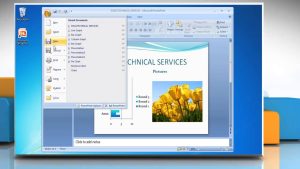Introduction
In the digital age, Microsoft Word has become a versatile tool for creating various types of content, including books. Whether you’re an aspiring author, a subject matter expert, or a professional writer, Word provides a user-friendly platform for crafting and publishing your work.
A book in the context of Word refers to a comprehensive document containing multiple chapters, sections, and supporting elements such as a table of contents, headers, footers, and page numbers. Word offers powerful features that allow you to structure, format, and enhance your book, giving it a professional and polished appearance.
Benefits of using Word for book creation:
- User-friendly interface and familiar tools
- Robust formatting and styling options
- Seamless integration with otherMicrosoft Office applications
- Ability to create print-ready and digital versions of your book
- Cost-effective solution compared to specialized book publishing software
The book creation process in Word involves several stages, from setting up the document structure to formatting the content, enhancing the appearance, and finalizing the book for publishing. By following this step-by-step guide, you’ll learn how to transform your manuscript into a professional-looking book that you can proudly share with the world.
Part 1: Setting Up the Book Document
1.1. Choosing the Right Word Version and Template
The first step in creating a book in Word is to ensure you have a compatible version of the software and select the appropriate template.
Compatible Word versions for book creation: While most recent versions of Word support book creation features, it’s recommended to use Word 2013 or later for the best experience. These versions offer advanced formatting tools and better compatibility with publishing platforms.
Using built-in book templates or creating a custom template: Word provides several built-in templates specifically designed for books, including templates for fiction, non-fiction, and academic works. These templates come pre-formatted with styles, page layouts, and other elements tailored for book creation. Alternatively, you can create a custom template from scratch or modify an existing one to suit your specific needs.
Adjusting page size and margins: Choose the appropriate page size for your book, such as standard trade book sizes (e.g., 6×9 inches, 5.5×8.5 inches) or create a custom size. Adjust the margins to ensure consistent spacing and a professional look throughout your book.
1.2. Structuring the Book
Once you’ve set up the document and chosen a template, it’s time to structure your book.
Adding sections and chapters: Use Word’s section breaks to separate your book into chapters or major sections. This will allow you to apply different formatting or page settings to specific parts of your book.
Creating a table of contents: Word can automatically generate a table of contents based on the headings in your document. This makes it easy for readers to navigate through your book and quickly find the sections they’re interested in.
Inserting headers and footers: Headers and footers are essential elements that typically display the book’s title, chapter names, page numbers, and other relevant information. Word allows you to customize headers and footers for consistency throughout your book.
Applying page numbering: Proper page numbering is crucial for a professional-looking book. Word offers various options for numbering pages, including different styles for front matter (e.g., roman numerals) and the main content (e.g., Arabic numerals).
Part 2: Formatting the Book Content
2.1. Text Formatting
Consistent and professional text formatting is essential for creating a polished book. Word provides several tools to help you achieve this:
Setting up styles for headings, body text, and captions: Use Word’s built-in styles or create custom styles to ensure consistent formatting for different elements like chapter titles, subheadings, body text, and captions. Styles help maintain a cohesive look throughout your book.
Applying consistent formatting across the book: Once you’ve defined your styles, apply them consistently across all chapters and sections of your book. This will ensure a uniform appearance and make it easier to update formatting if needed.
Using Word’s built-in styles or creating custom styles: Word comes with pre-defined styles for common book elements, such as “Heading 1,” “Body Text,” and “Caption.” However, you can also create custom styles tailored to your book’s specific design requirements.
2.2. Handling Images and Illustrations
Books often include images, illustrations, and other visual elements to enhance the reading experience. Word offers tools to insert and format these elements:
Inserting and positioning images: Add images to your book by inserting them directly into the document or linking them from external sources. Position images precisely using Word’s layout and alignment tools.
Wrapping text around images: Achieve a professional layout by wrapping text around images, allowing for a seamless integration of text and visuals.
Creating captions and cross-references for figures: Enhance the readability of your book by adding descriptive captions to figures and images. Word also allows you to create cross-references, making it easy for readers to locate specific figures mentioned in the text.
2.3. Working with Tables and Charts
In addition to text and images, books often include tables and charts to present data or information in a structured and visual manner.
Inserting and formatting tables: Insert tables directly into your Word document and format them to match the style of your book. Adjust table properties, such as cell borders, shading, and alignment, for a polished look.
Inserting charts and graphs: Word integrates with Microsoft Excel, allowing you to create and insert charts and graphs directly into your book. This is particularly useful for presenting statistical data or visualizing trends.
Applying consistent formatting for tables and charts: Ensure that your tables and charts have a consistent appearance throughout your book by applying the same formatting styles or creating custom styles specifically for these elements.
Part 3: Enhancing the Book’s Appearance
3.1. Creating a Professional Book Cover
A well-designed book cover is essential for making a strong first impression and attracting readers. Word provides tools to create a professional-looking cover:
Designing a book cover in Word or using external tools: Word offers templates and design tools to create a basic book cover directly within the application. Alternatively, you can use external graphic design software like Adobe Photoshop or Canva to create a more elaborate cover design.
Inserting the cover into the document: Once you’ve created your book cover, insert it as the first page of your Word document. Adjust the page settings and formatting to ensure the cover appears correctly.
Adding front matter (title page, copyright, etc.): In addition to the cover, your book should include front matter elements like the title page, copyright information, dedication, and acknowledgments. Word allows you to easily create and format these pages.
3.2. Adding Design Elements
To further enhance the visual appeal of your book, consider incorporating additional design elements:
Inserting graphics, shapes, and watermarks: Word provides a wide range of graphics, shapes, and watermark options that you can use to add visual interest to your book’s pages. These elements can be used for chapter dividers, decorative borders, or background textures.
Using Word’s built-in design features: Explore Word’s design features, such as WordArt, SmartArt, and text effects, to create eye-catching titles, headings, or callouts within your book.
Creating custom design elements: If Word’s built-in design options don’t meet your needs, you can create custom design elements using external graphic design software and insert them into your Word document.
3.3. Applying Consistent Formatting
Consistency is key to creating a professional-looking book. Word offers several tools to help you maintain a cohesive look throughout your book:
Using section breaks for different formatting styles: Utilize section breaks to apply different formatting styles to specific sections of your book, such as chapters or front matter. This allows you to maintain consistent formatting within each section while allowing for variations between sections.
Creating and applying custom styles across the book: In addition to using pre-defined styles, create custom styles to ensure consistent formatting for unique elements in your book. Apply these styles consistently across all chapters and sections.
Ensuring consistency in font, layout, and design: Carefully review your book to ensure that font choices, layout elements (e.g., margins, spacing), and design elements are consistent throughout the entire document. Word’s navigation pane and style inspector can help you identify and correct any inconsistencies.
Part 4: Finalizing and Publishing the Book
4.1. Checking for Errors and Inconsistencies
Before publishing your book, it’s crucial to thoroughly review and check for any errors or inconsistencies:
Running spell and grammar checks: Use Word’s built-in spell and grammar checking tools to identify and correct any spelling or grammatical errors in your book. Consider enabling additional proofing options, such as style consistency checks, to ensure your formatting remains consistent.
Ensuring consistent formatting and styles: Review your book to ensure that all formatting and styles have been applied consistently throughout the document. Use Word’s navigation pane and style inspector to identify and fix any formatting inconsistencies.
Generating a table of contents and index: If your book includes a table of contents and/or an index, generate these automatically using Word’s built-in tools. Review the generated content to ensure accuracy and make any necessary adjustments.
4.2. Preparing for Print or Digital Publishing
Once you’ve thoroughly reviewed and finalized your book, it’s time to prepare it for publishing. Word offers options for both print and digital publishing:
Setting up print options (booklet, duplex printing, etc.): If you plan to publish a physical copy of your book, Word provides various print options to consider. These include booklet printing, duplex printing (printing on both sides of the page), and adjusting printer settings for optimal print quality.
Creating PDF versions for digital distribution: For digital distribution, Word allows you to save your book as a PDF file. This ensures that your book’s formatting and layout remain consistent across different devices and platforms.
Exporting to ePub or other e-book formats: If you plan to publish your book as an e-book, Word can export your document to popular e-book formats like ePub or MOBI. These formats are compatible with most e-reader devices and e-book platforms.
4.3. Publishing and Distribution Options
With your book finalized and prepared for publishing, you have several options for getting your work into the hands of readers:
Self-publishing platforms for print and digital books: Platforms like Amazon Kindle Direct Publishing (KDP), IngramSpark, and Draft2Digital offer self-publishing services for both print and digital books. These platforms provide tools for uploading your book, setting pricing, and distributing it through various channels.
Print-on-demand services: If you prefer a more traditional printing approach, consider using print-on-demand services like IngramSpark or CreateSpace. These services handle the printing and distribution of your book, eliminating the need for large upfront print runs.
Sharing and distributing e-books: For e-books, you can distribute your work through platforms like Amazon Kindle Store, Apple Books, Google Play Books, and Barnes & Noble Nook. Many self-publishing platforms also offer e-book distribution services.
Tips and Tricks
Best practices for book creation in Word: Establish a consistent formatting strategy from the beginning, use styles extensively, and take advantage of Word’s navigation and review tools to ensure a polished final product.
Useful Word features and add-ins for book authors: Explore Word’s built-in features like track changes, comments, and collaboration tools to streamline the writing and editing process. Additionally, consider using third-party add-ins like ProWritingAid or Grammarly to enhance your writing and editing capabilities.
Troubleshooting common issues during the book creation process: If you encounter issues like formatting inconsistencies, broken links, or layout problems, consult Word’s built-in help resources or online forums for troubleshooting tips and solutions.
Conclusion
Creating a professional-looking book in Microsoft Word is a rewarding and achievable task. By following the steps outlined in this tutorial, you’ll learn how to set up your book document, format your content, enhance the visual appeal, and prepare your work for publishing.
Word offers a powerful set of tools that cater to the specific needs of book authors, from structuring and formatting to design and publishing. By leveraging these tools effectively, you can transform your manuscript into a polished and professional-looking book that you can proudly share with the world.
Remember, the key to a successful book creation process in Word is attention to detail, consistency, and a willingness to explore the software’s features. Don’t be afraid to experiment with different formatting and design options to find the perfect look and feel for your book.
So, what are you waiting for? Gather your manuscript, open up Word, and start creating the book you’ve always dreamed of publishing. With dedication and the tools provided in this tutorial, you can turn your literary vision into a tangible reality.
Happy writing and publishing!







